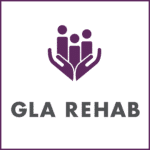By Kathryn Decker, MScOT Reg. (Ont).
Life care planners at GLA prioritize communication with a client’s rehabilitation and medical providers to elicit future treatment recommendations. The client’s treating health care professionals best know what treatment will be required for the future and their recommendations are essential to preparing life care plans that stand up to scrutiny.
This process, while critical, is not without its challenges – especially in the medical-legal environment where treatment providers may be fearful of becoming involved in an unpleasant and litigious process.
A recent article published in the Journal of Life Care Planning[1] highlights some of the common challenges that life care planners face when gathering treatment recommendations in the medical-legal context. Two common challenges, as well as suggestions to help life care planners overcome common pitfalls will be discussed below.
- Inhibition about Participating in Litigation-Related Consultations
Health care professionals, especially those who do not typically practice in a medical-legal context, may be uncomfortable working with a life care planner, if they believe there is a risk that they will be called to court to have their recommendations challenged by other treatment providers, lawyers or judges.
While this reticence is understandable, the fact remains that recommendations from the client’s treatment team are essential to his or her future well being and access to needed treatment.
To overcome this obstacle, the author recommends that life care planners present their requests in a transparent manner while offering full disclosure whether the plan is being used for litigation purposes and who (i.e. plaintiff or defense) has hired the life care planner to write the report.
By providing objective, straightforward answers, the life care planner may reduce the treatment provider’s inhibitions and understandable discomfort.
By contrast, an evasive, unclear approach to communication will likely have the opposite effect and will only confirm the treatment provider’s fear of entering into the ‘murky waters’ of the medical-legal environment.
An example of a candid, straight forward approach to the initial request to a heath care provider is presented by the author:
“I became involved in patient Y’s case to assess future treatment she is reasonably expected to require. That is the reason for my consult with you. I reviewed your treatment notes and know from my examination of her that she remains under your care. Yes, her case is in litigation and future care needs are at issue. My role in her case is to promote efforts to settle it by determining her future rehabilitation needs and identifying the associated costs; hence, my conference with you”.
- Treatment Providers’ Lack of Priority in Providing Life Care Consultations and/or Being Too Busy
Physicians and rehabilitation professionals are busy. Providing patient care, completing notes and documentation and the overseeing the daily operation of a clinic is time consuming and, understandably, the priority for most treatment providers. As such, it can be difficult for LCP to “pin down” treatment providers to a time to talk on the phone, write a recommendation or meet in person.
In addition, not all healthcare providers share the view of life care planner that long-term recommendations, especially in cases where long term outcomes of injury are unclear or vary widely between patients, are paramount.
Life care planners must be persistent and, as mentioned above, straightforward when seeking long term treatment recommendations from particularly elusive treatment providers.
That said, in instances when a particularly busy or unreachable healthcare professional is encountered, a potential solution is to seek out other staff employed by the treatment provider such as therapists, nurses or care coordinators, who may have more direct access to the elusive party or who may even be able to provide recommendations on his or her behalf.
Another option available to the life care planner is to summarize the treatment provider’s clinic notes and prepare a short document with suggested treatment recommendations. This document can be sent to the provider directly or to a secretary or assistant who is likely to have more access to the provider in question.
A simple signature of agreement or handwritten suggestions may be sufficient for the life care plan and can be more efficient than trying to track down a very busy professional for a detailed conversation.
At GLA, our life care planners work diligently to secure treatment recommendations from all relevant healthcare providers. Our life care plans are detailed, comprehensive and built from the recommendations of the client’s treatment team. If you would like more information on our approach to working with physicians and other healthcare providers when developing a life care plan, please contact us. We will be happy to provide you with more information.
[1] Shahnasarian, M. (2017). Eliciting Rehabilitation Recommendations During Forensic Life Care Plan Consultations. Journal of Life Care Planning. 15, 2. Pg. 13-19.


